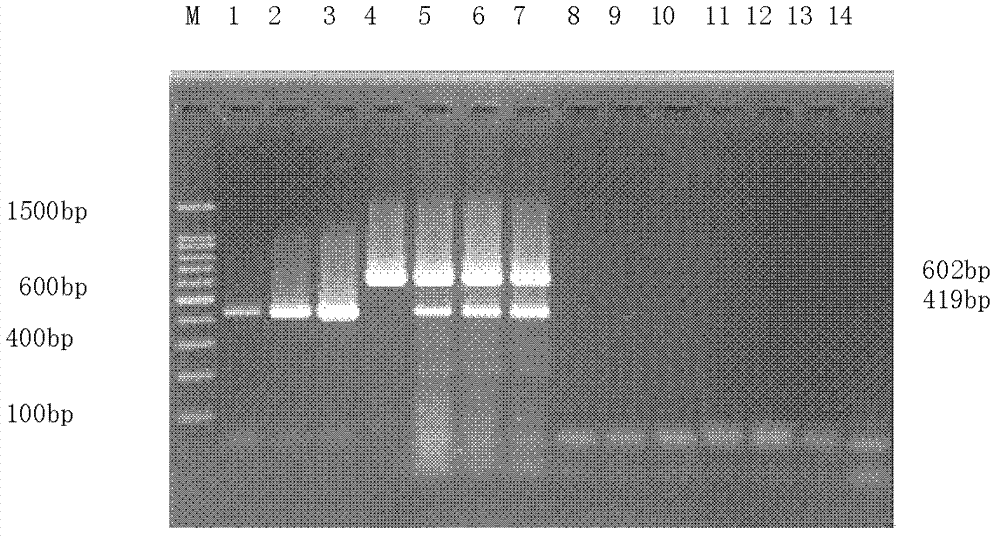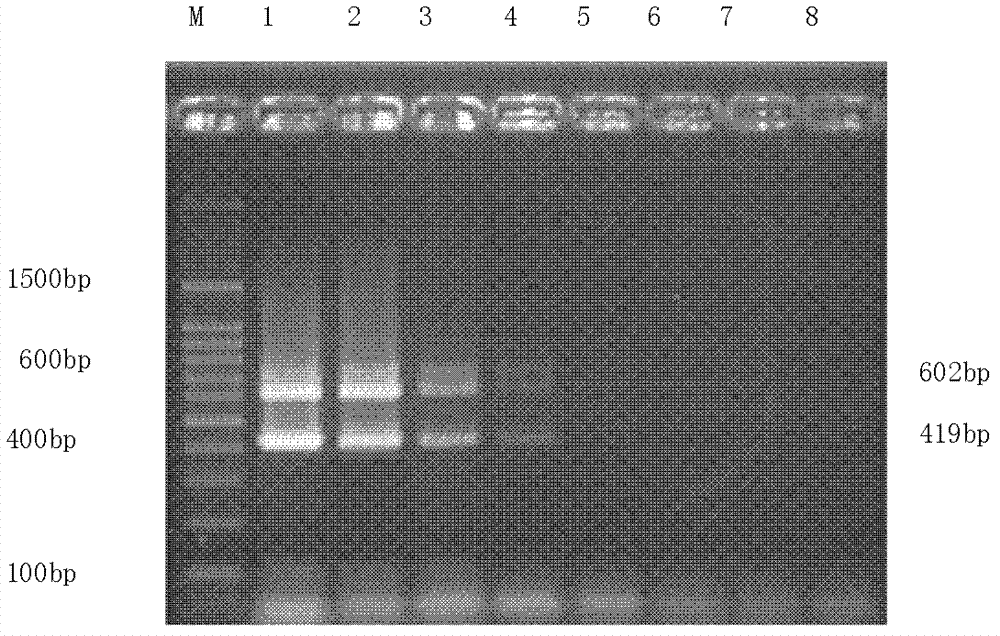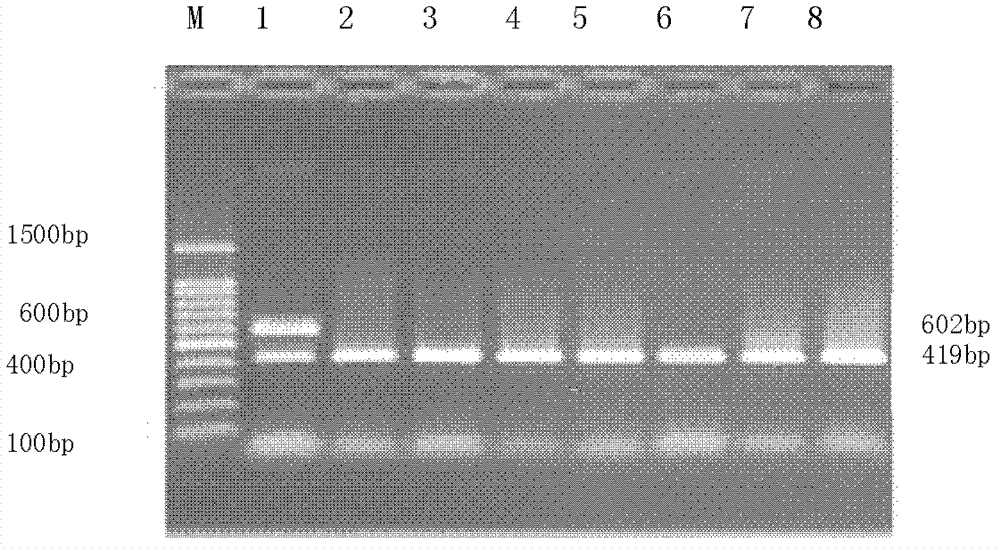Double-PCR (Polymerase Chain Reaction) detection kit for newcastle disease virus and duck plague virus
A technology of Newcastle disease virus and duck plague virus, applied in the biological field, can solve the problems of cumbersome operation, low sensitivity, and long diagnosis time, and achieve high application value, good specificity, and high sensitivity
- Summary
- Abstract
- Description
- Claims
- Application Information
AI Technical Summary
Problems solved by technology
Method used
Image
Examples
Embodiment 1
[0041] Embodiment 1, the design of primer
[0042] For the conserved genes of Newcastle Diseases (ND for short) virus and Duck Plague (DP for short) virus (ND conserved gene is the 1676-2094th nucleotide of F gene genbank number JN872152.1, DP conserved gene It is the 55471-56072 nucleotide of EU08288.2), combined with the comprehensive analysis results of DNAstar, Primer5 and NCBI-blast biological software, designed two pairs of specific primers, the primers were synthesized by Shanghai Invitrogen Company, and the primer sequence parameters are shown in the table 1:
[0043] Table 1 is the nucleotide sequence of NDV, DPV primer
[0044]
Embodiment 2
[0045] Embodiment 2, the specificity and sensitivity test of primer in double PCR detection
[0046] 1. Double PCR specificity test
[0047] Newcastle disease virus NDV-F48E9 was purchased from China Veterinary Drug Administration;
[0048] Newcastle disease virus NDV-Lasota was purchased from China Veterinary Drug Administration;
[0049] Newcastle disease virus C 30 The strain was purchased from China Veterinary Drug Administration;
[0050] Duck plague local isolate 1 (being duck plague virus, hereinafter referred to as DPV) is recorded in "Research on the detection of duck plague virus by polymerase chain reaction", Chinese Journal of Veterinary Medicine 2000, 34 (4): 10-12, the public can download from Guangxi Obtained by Zhuang Autonomous Region Veterinary Research Institute;
[0051] Duckling hepatitis virus is recorded in "Research on Detection of Duck Plague Virus by Polymerase Chain Reaction", Chinese Journal of Veterinary Medicine, 2000, 34(4): 10-12, and the pu...
Embodiment 3
[0083] Embodiment 3, double PCR detection of clinical sample
[0084] For the collected 7 copies (numbered 1-7) of duck disease materials, 1-3 livers, 4-5 spleens, 6-7 lungs were collected, and they were ground into suspensions for virus isolation and identification, and the duck disease samples were extracted respectively. The samples were DNA and RNA, and the RNA was reverse-transcribed to obtain cDNA. The DNA and cDNA of each sample were mixed (volume ratio 1:1) to obtain mixed samples numbered 1-7.
[0085] The above-mentioned mixed samples numbered 1-7 were respectively used as templates, and the double PCR detection was carried out according to the method of 3) of 1 of Example 2.
[0086] If a 419bp fragment is obtained, the sample contains NDV, otherwise it does not;
[0087] If a 602bp fragment is obtained, the sample contains DPV, otherwise it does not;
[0088] If fragments of 419bp and 602bp are obtained, the sample contains NDV and DPV, and vice versa.
[0089] ...
PUM
 Login to View More
Login to View More Abstract
Description
Claims
Application Information
 Login to View More
Login to View More - R&D
- Intellectual Property
- Life Sciences
- Materials
- Tech Scout
- Unparalleled Data Quality
- Higher Quality Content
- 60% Fewer Hallucinations
Browse by: Latest US Patents, China's latest patents, Technical Efficacy Thesaurus, Application Domain, Technology Topic, Popular Technical Reports.
© 2025 PatSnap. All rights reserved.Legal|Privacy policy|Modern Slavery Act Transparency Statement|Sitemap|About US| Contact US: help@patsnap.com



